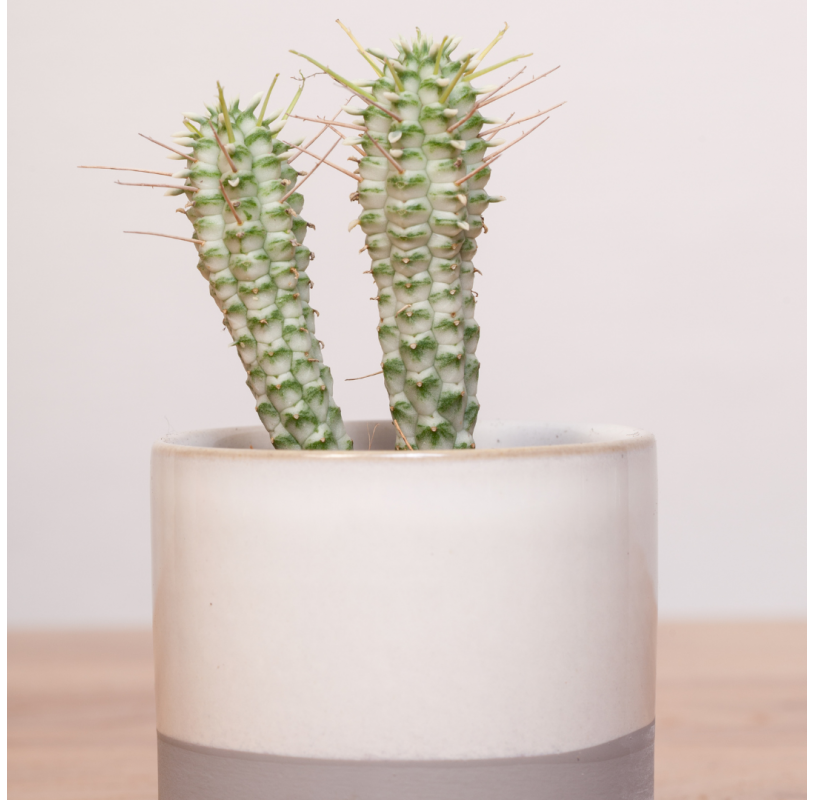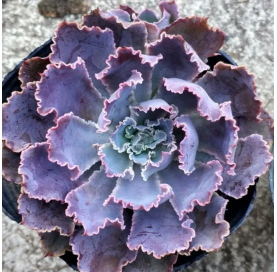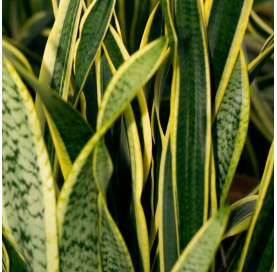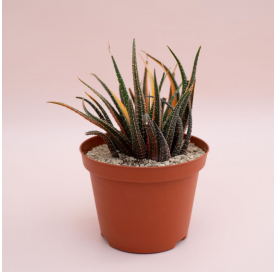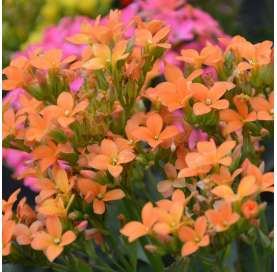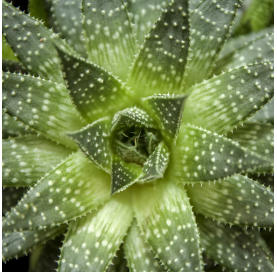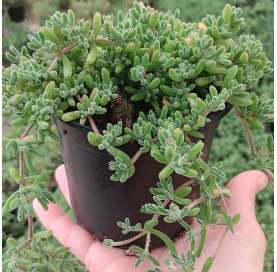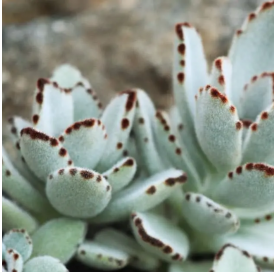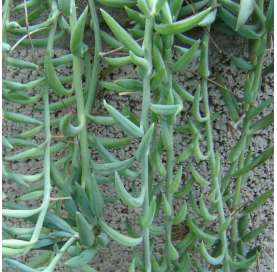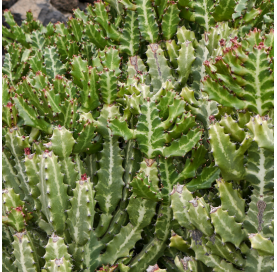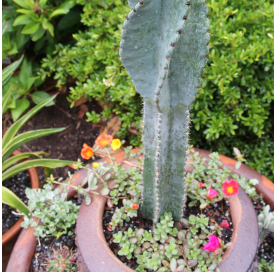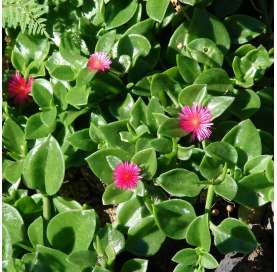Euphorbia mammillaris
The Euphorbia mammillaris is a succulent native to South Africa, known for its cylindrical stem with prominent tubercles and its resilience to adverse conditions. It is easy to care for, making it ideal for beginners and collectors, but its toxic sap should be handled with caution. It requires bright light, moderate watering, and well-drained soil.
 Encrypted payments for greater security
Encrypted payments for greater security
To reduce the plant's time in transit, shipments are made from Monday to Wednesday.


Shipping only to mainland Spain and mainland Portugal
Description
Euphorbia mammillaris is a columnar succulent belonging to the Euphorbiaceae family. It is characterized by its cylindrical main stem, segmented with prominent tubercles resembling small nipples, which gives the plant its name "mammillaris." The stems are typically light green with reddish or purplish edges. It often develops small spines and, under optimal conditions, produces tiny yellow or greenish flowers.
Origin
Native to South Africa, Euphorbia mammillaris thrives in arid and semi-arid regions. Its ability to store water in its stems allows it to survive in dry climates and challenging conditions.
History
This plant has long been appreciated by succulent enthusiasts for its striking structure and adaptability. In South Africa, plants from the Euphorbia genus have been traditionally used for medicinal purposes, though Euphorbia mammillaris is primarily cultivated as an ornamental plant.
Care Tips
- Light: Requires bright light, ideally several hours of direct sunlight daily. If grown indoors, place it near a well-lit window.
- Soil: Prefers a well-draining soil mix, such as those specifically formulated for cacti and succulents.
- Temperature: Thrives in warm temperatures and does not tolerate frost. Keep it above 10°C (50°F).
- Watering: As a drought-tolerant plant, water moderately. Allow the soil to dry out completely between waterings. Reduce watering during winter.
- Fertilization: Use a liquid fertilizer for succulents once a month during the growing season (spring and summer).
Fun Fact
Euphorbia mammillaris contains a milky sap that is toxic if ingested or if it comes into contact with the skin, causing irritation. This sap serves as a natural defense mechanism against predators. Handle with care and keep it away from children and pets.
Watering
- In Summer: Moderate watering, ensuring the soil drains completely.
- In Winter: Minimal watering, every 4-6 weeks depending on environmental conditions.
- Method: Water at the base, avoiding contact with the stem or spines to prevent rot.
Pruning
- Euphorbia mammillaris requires minimal pruning.
- Remove damaged or dried stems using clean scissors to maintain a healthy appearance.
- Clean the spines and tubercles of any accumulated debris or dry leaves.
General Care
- Placement: Ideal for succulent gardens, terrariums, or as an indoor plant in decorative pots.
- Propagation: Easily propagated through cuttings. Allow the cutting to dry and heal for a few days before planting.
- Pests: Resistant to most pests but may occasionally encounter mealybugs or spider mites if neglected.
- Sap: Handle with gloves to avoid irritation caused by its toxic sap.
Euphorbia mammillaris is an excellent choice for those seeking a resilient, exotic-looking succulent with low-maintenance requirements.
Data sheet
- Name
- Euphorbia mammillaris
- Origen
- Sotuh Africa
- Height
- 15 and 30 cm
- Colour
- Light green with reddish or purplish edges under intense light.
- Flowering
- Blooms primarily in spring and summer.
- Location
- Place in a bright spot, such as near a south- or east-facing window.
- Applications
- Perfect for pots, succulent gardens, terrariums, or as an indoor plant.
- Note
- Contains a milky sap that can irritate the skin and is toxic if ingested. Handle with gloves.
12 other products in the same category:
-
Echeveria neon Breakers€6.00
-
Sansevieria.€12.00
-
Haworthiopsis attenuata€0.00
-
Kalanchoe blossfeldiana.€3.60
-
Hawortia venosa€6.00
-
Mesembryanthemum...€2.20
-
Rhipsalis baccifera,...€8.00
-
-
Senecio radican.€7.00
-
Euphorbia lactea€6.00
-
Spiral cactus€6.00
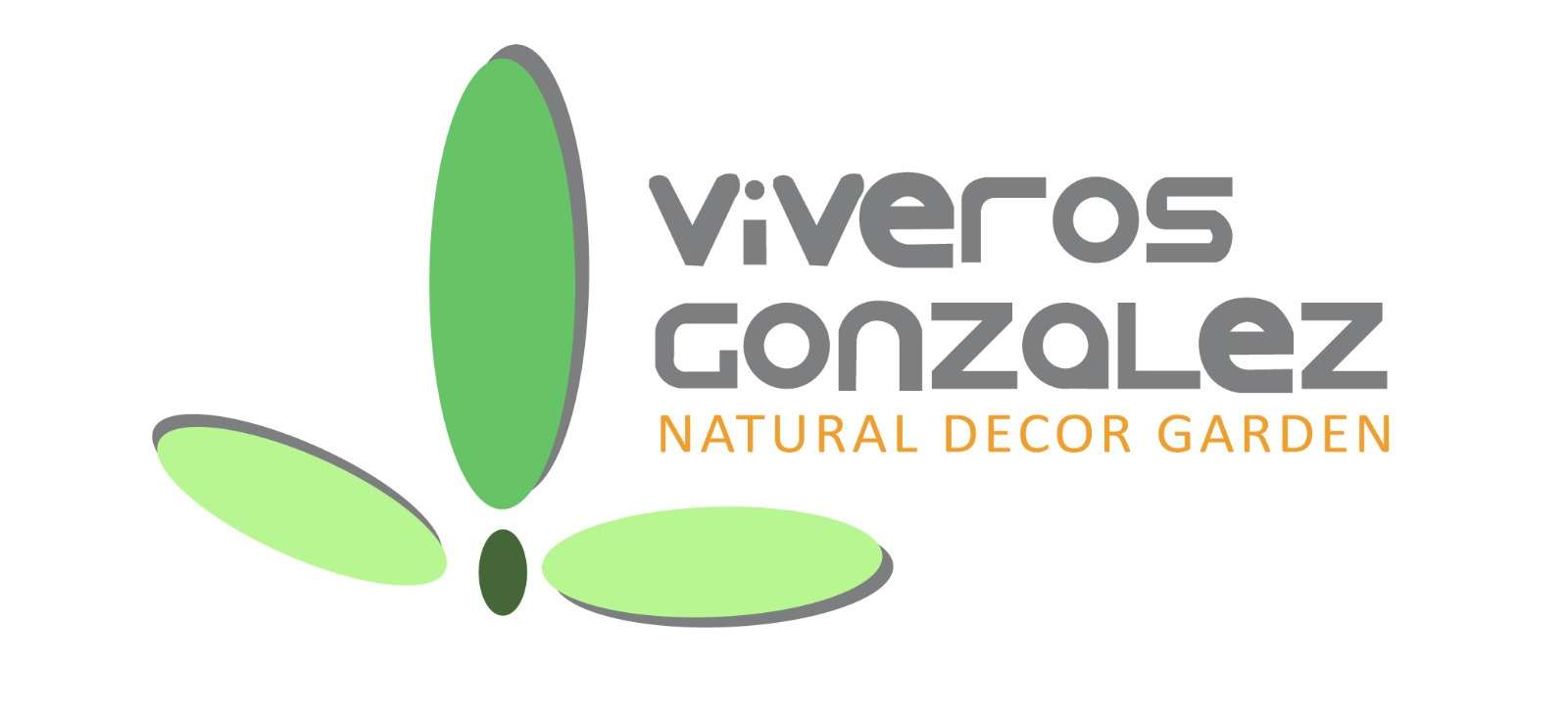
 English
English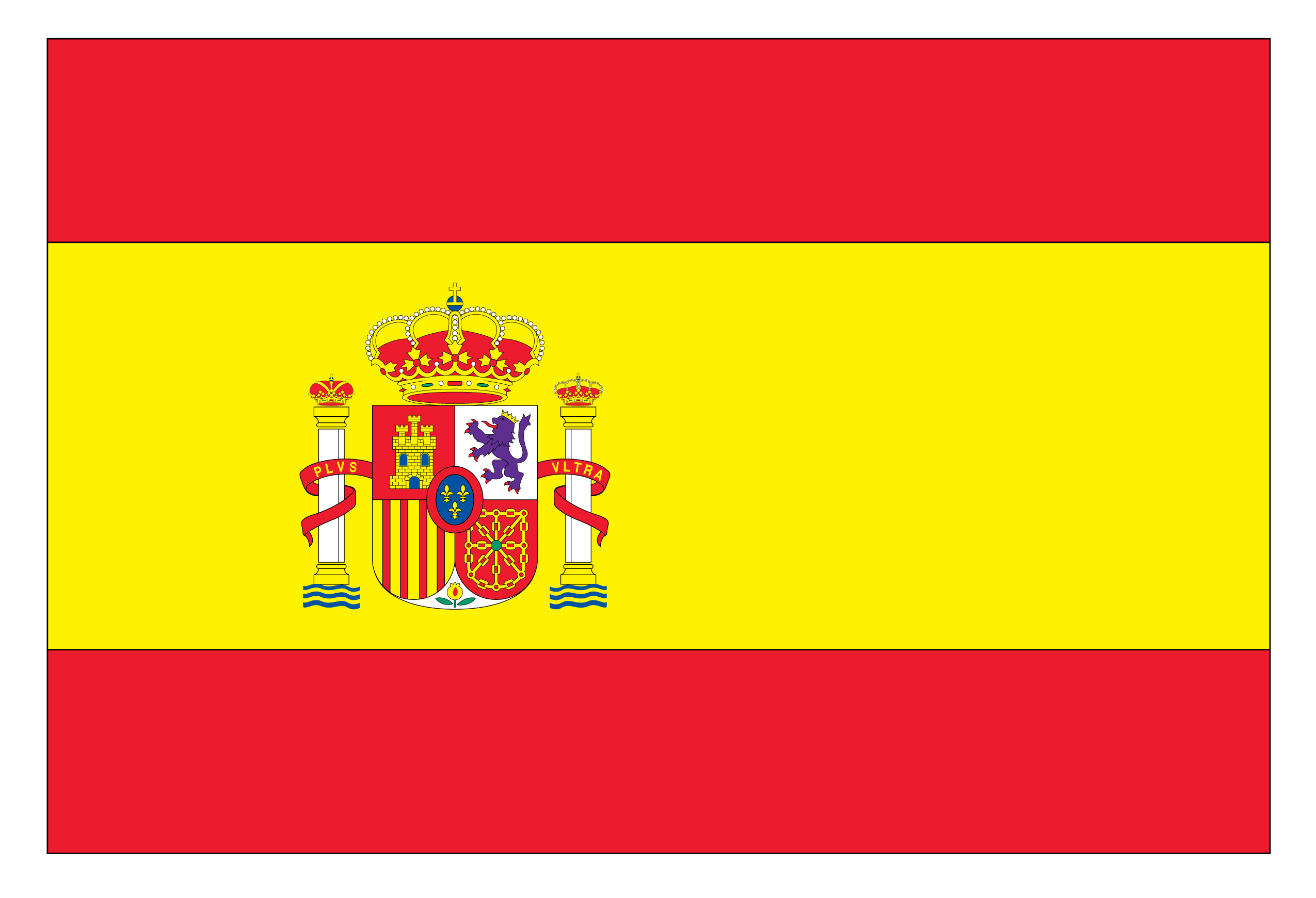 Spanish
Spanish